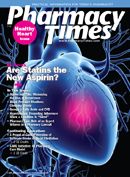Publication
Article
Pharmacy Times
Developing Patient-Specific Clinic Protocols
Author(s):
With a lack of staff and resources to help determine what drugs are used in busy clinics and to document standard protocols prescribed in them, perhaps a starting strategy is to enlist the help of professional students or pharmacy residents.
Mr. McAllister is a health systems consultant based in Chapel Hill, North Carolina.

This week, I had a new experience as a patient in a large health system clinic. I scheduled an endoscopy and colonoscopy on the same day. I had a colonoscopy 5 years ago, which was unremarkable, so I thought this would be a relatively similar event—this turned out to not be true. After the initial visit with my gastroenterologist, I was given a preprinted protocol to follow before the procedure. I noticed that the bowel cleansing preparation protocol was different from the last time, but attributed the change to the recall of Fleet Phospho-soda, which I had used previously. The new protocol included milk of magnesia, bisacodyl tablets, and a MiraLAX regimen. I deferred to the “physician’s” protocol without challenging the plan or asking a question, because my first experience had been good, and this time I was having 2 procedures.
I adhered to the protocol completely— what a mistake. I understand that it is important to cleanse the colon to ensure that it can be seen during the procedure, but I wondered in retrospect whether another dimension for an aggressive bowel prep is for the convenience of the staff. Combined with the clear liquid diet for 40 hours, I was a wreck by the time I arrived at the clinic for the procedure. I was weak, had bad cramps, and despite my efforts to stay hydrated, I was as dry as a bone. When the physician and I talked prior to the start of the procedure and I asked about the bowel preparation protocol, he said that the protocol I was given was universally prescribed.
During the procedure, I was noticeably undermedicated. The state of “conscious sedation” was a far cry from acceptable, and only after I complained multiple times and threatened to get off the table during the procedure was I given enough medication to enable my physician to complete the procedure.
I thought about my experiences as a director of pharmacy and realized that I could not remember a Pharmacy and Therapeutics (P&T) Committee discussion about protocols used by clinics. I also admit that very little was done to retrospectively review even a small sample of drug regimens prescribed to clinic patients. Clinic environments have evolved to provide much more complicated and higher risk care to an ever-increasing number of patients. Even more problematic is that many of these clinics are dealing with higher volumes of patients and are now off-site, making access to staff and resources to cope with problems that arise more complicated.
In these tough economic times, getting approval for additional pharmacy staff is more challenging than ever, especially when added pharmacy staff in ambulatory care environments generates little additional revenue. Having professional students or pharmacy residents determine what drugs are used in busy clinics and document standard protocols prescribed in them, however, may be an excellent strategy to start to address the deficiency.
Joint Commission standards create expectations for prescribing individualized therapy (not bowel prep protocols for everyone from 90-lb seniors to 250-lb normal adults). Similarly, the Joint Commission expects drug use oversight in all environments to ensure safety, quality, and optimal drug therapy outcomes.
Having residents and students determine drug use in clinic environments and make recommendations to the pharmacy department for more indepth oversight as a one-time project would be a fantastic educational experience representing a cost-effective initiative that could be used to substantiate a part of the cost of investments made in their education by the department. It would include drug information, ambulatory care, and P&T learning experiences.
This approach would be a start to stepping up to our responsibility in an expanding environment that many of us sometimes ignore. What do you think? â–







